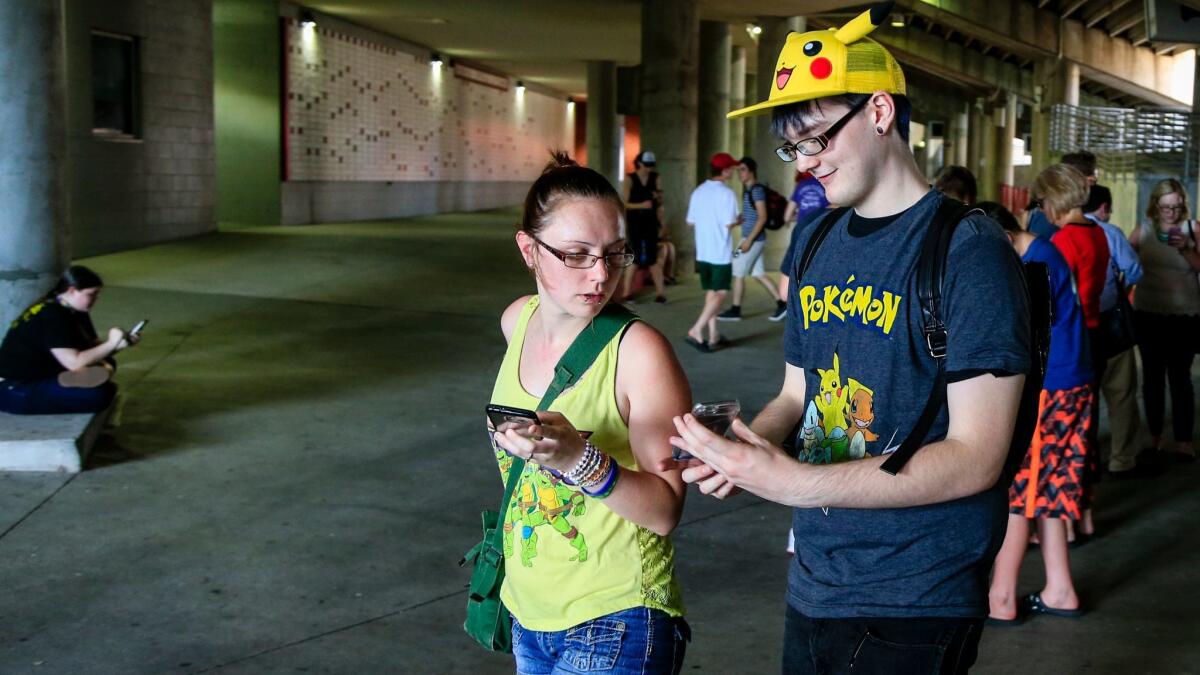Sorry, Pokemon Go addicts, playing the video game doesn’t count as a real workout

Harvard University researchers have some bad news for Pokemon Go enthusiasts: The time you spend hunting digital monsters doesn’t qualify as a workout.
After analyzing the movements of actual players, the researchers calculated that Pokemon Go encouraged people to take an average of 955 extra steps per day in the first week after downloading the game. Assuming that each step covered 31.5 inches and that players walked at a pace of 2.5 miles per hour, the game prompted people to walk for 11 extra minutes each day.
That’s not much. The World Health Organization recommends that adults get at least 150 minutes of aerobic physical activity each week. If you spread that equally throughout the week, you’ll need to get 21.4 minutes of exercise each day — twice as much as Pokemon Go provides.
And that was just for the first week, when the augmented reality game was most addictive. In subsequent weeks, players spent less time walking around catching monsters; by the sixth week, they were back to their pre-Pokemon Go habits.
Pokemon Go has been downloaded more than 500 million times since it hit smartphones in July. The craze raised an intriguing question: Can a video game entice couch potatoes to get the exercise they need?
To find out, researchers led by Katherine B. Howe, Christian Suharlim and Peter Ueda of Harvard’s T.H. Chan School of Public Health recruited adults between the ages of 18 and 35 who lived in the U.S. and used iPhone 6 smartphones, which automatically recorded their daily steps.
A total of 560 study participants downloaded the game and spent enough time playing it to reach level 5, becoming eligible to join a Pokemon team and compete in a Pokemon gym. Typically, it takes about two hours to hit this milestone, the researchers said.
Before downloading the game, players took an average of 4,256 steps per day. During the first week of play, that number spiked to 5,123 steps per day. Then it gradually decreased, falling to 4,994 steps per day in Week 2, 4,693 steps per day in Week 3, and 4,499 steps per day in Week 4. Players’ average daily steps in the last two weeks (4,108 in Week 5 and 3,985 in Week 6) were both below their pre-Pokemon Go levels.
Meanwhile, another 622 study participants did not play Pokemon Go and served as controls. Before the game was available, these people took an average of 4,126 steps per day. Their daily step count dipped over the following six weeks, but generally not by as much.
After comparing the two groups, the researchers concluded the exercise benefits of playing Pokemon Go were “moderate” at best. A typical health intervention usually aims to increase steps by 2,500 per day, they noted.
Suharlim, a research associate at Harvard’s Center for Health Decision Science, said he and Howe were inspired to conduct the study after marveling that Pokemon Go prompted him to run around Boston to catch Dratinis, hatch digital eggs and generally advance in the game. Normally, he said, he doesn’t walk or run much for any reason.
A level 23 Pokemon trainer, Suharlim was surprised that others averaged only 955 additional steps as a result of playing the game.
“I guess some people might be discouraged with some logistics of the game, such as long server crashes, long loading time, etc.,” he said. Indeed, despite his initial enthusiasm, he burned out after one month of play — mirroring the pattern seen among his study subjects.
The researchers allowed for the possibility that the game does more for players than their step counts would indicate.
“Other potential benefits might exist, such as increased social connectedness and improved mood,” the researchers wrote. On the other hand, they added, “Pokemon Go might also entail risks, such as injuries and road traffic incidents.”
The results were published Tuesday in the BMJ’s Christmas issue.
Follow me on Twitter @LATkarenkaplan and “like” Los Angeles Times Science & Health on Facebook.
MORE IN SCIENCE
UPDATES:
Dec. 14, 8:55 a.m.: This story has been updated to include comments from study co-author Christian Suharlim.
This story was originally published at 4:55 p.m. on Dec. 13.






